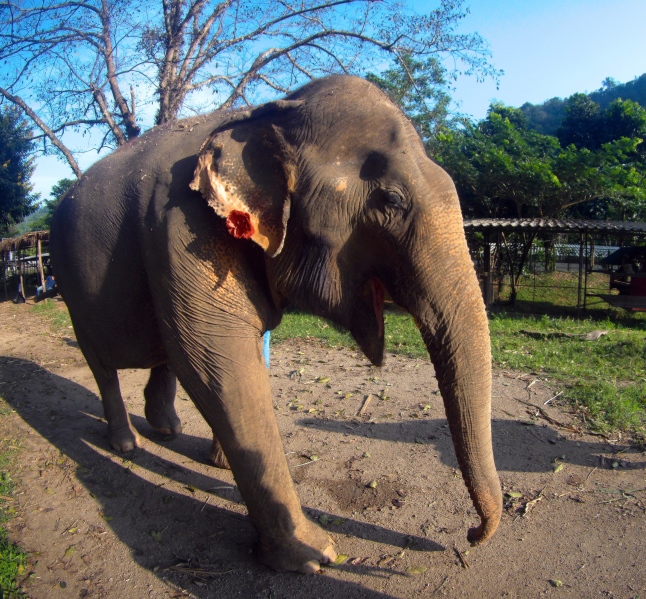It is wonderful to see a herd of elephants that are safe from humans. I took this photograph on my recent trip to to Thailand where myself and a friend were volunteering as veterinary nurses to help care for rescued elephants.
These elephants have formed a herd of their own at Elephant Nature Park in the Mae Taeng District, Chiang Mai Province, in Northern Thailand. Elephants have strong emotional ties. Predominantly lead by a matriarch, a herd will typically consist of a mother, her children, sisters and nieces as well as other females not related to the matriarch. However, relationships amongst Asian Elephants can be more complex at times consisting of smaller groups.
Unfortunately many young elephants are TAKEN from their mothers.
The surviving family are often killed in front of the calf.
When the calf is first taken, it goes through the ‘Phajaan’ or the crush, this may last days or weeks. The Phajaan (this video illustrates some of the torture of the crush)
During the Phajaan, the calf is tied up and beaten with hooks, nails and sling shots, deprived of food and water and forced to stand in its own urine and faeces. The elephants trunk will often be tied out of the way as the elephant will try to commit suicide by standing on its trunk.
Once the spirit of the elephant has been crushed, they are then used in the illegal logging trade, trekking, street begging or sold to the circus where the abuse continues. An elephants life span varies between wild/captive elephants but a lifetime of abuse can last 60 years or more.
Many elephants working in these trades will be malnourished, beaten and forced to work regardless of broken and deformed limbs, dislocated hips, spinal problems, blindness, pregnancy and miscarriage.
This is the abuse that these beautifully intelligent mammals suffer.
I went on an elephant trek in 2011 excited to see elephants up close and personal. I was unaware of the cruelty behind it.
Awareness is the key to change. I, like hundreds of other people would have chosen to boycott elephant trekking if I had known the truth behind it. If we can stop funding these projects they will have to change their ways to survive.
Please be elephant aware and share to stop the trade. We have the tool of social media, use it to make a difference.
Petition for change
Useful links
ENP video
Footage of the phajaan.










